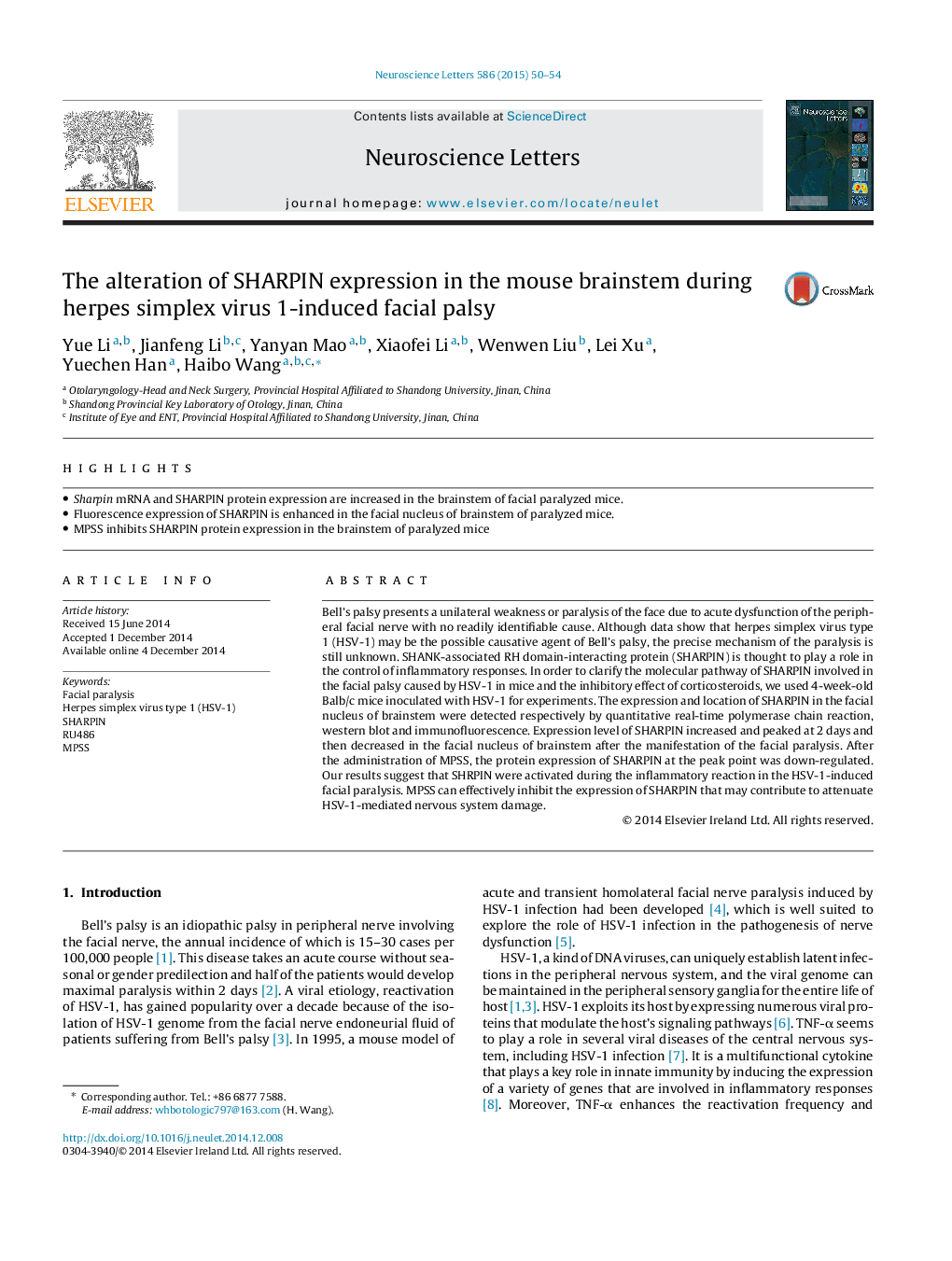| Article ID | Journal | Published Year | Pages | File Type |
|---|---|---|---|---|
| 4343594 | Neuroscience Letters | 2015 | 5 Pages |
•Sharpin mRNA and SHARPIN protein expression are increased in the brainstem of facial paralyzed mice.•Fluorescence expression of SHARPIN is enhanced in the facial nucleus of brainstem of paralyzed mice.•MPSS inhibits SHARPIN protein expression in the brainstem of paralyzed mice
Bell’s palsy presents a unilateral weakness or paralysis of the face due to acute dysfunction of the peripheral facial nerve with no readily identifiable cause. Although data show that herpes simplex virus type 1 (HSV-1) may be the possible causative agent of Bell’s palsy, the precise mechanism of the paralysis is still unknown. SHANK-associated RH domain-interacting protein (SHARPIN) is thought to play a role in the control of inflammatory responses. In order to clarify the molecular pathway of SHARPIN involved in the facial palsy caused by HSV-1 in mice and the inhibitory effect of corticosteroids, we used 4-week-old Balb/c mice inoculated with HSV-1 for experiments. The expression and location of SHARPIN in the facial nucleus of brainstem were detected respectively by quantitative real-time polymerase chain reaction, western blot and immunofluorescence. Expression level of SHARPIN increased and peaked at 2 days and then decreased in the facial nucleus of brainstem after the manifestation of the facial paralysis. After the administration of MPSS, the protein expression of SHARPIN at the peak point was down-regulated. Our results suggest that SHRPIN were activated during the inflammatory reaction in the HSV-1-induced facial paralysis. MPSS can effectively inhibit the expression of SHARPIN that may contribute to attenuate HSV-1-mediated nervous system damage.
